Planting and caring for raspberries: subtleties and nuances

Raspberries delight us with their pleasant taste and delicate smell in early July, and some varieties in October or November. This berry has many beneficial qualities and properties. Among gardeners, the remontant raspberry variety is gaining particular popularity. You can pick berries even at low temperatures. Growing raspberries is not difficult. To obtain good harvest, you should know some nuances.
Content:
- How to prepare the soil for raspberries
- Features of planting raspberries
- Rules for caring for raspberries
How to prepare the soil for raspberries
The raspberry bush takes root well in fertile soils with sufficient moisture. Lack of moisture leads to a poor harvest. Therefore, favorable conditions should be created for the development of raspberries. The area where the raspberries will be planted must be weeded and cleared of weeds.
On peaty soil, clay and manure are added during planting to enhance the activity of microorganisms that decompose peat. In low places, raspberry bushes may be damaged by frost, so planting varieties that bloom early is not recommended.
Raspberries are planted along the entire length and width of the row. For this purpose, they make passes up to 60 cm wide and dig trenches up to 40 cm deep. If the site has soddy-podzolic soils, then the depth is made normal. Next, mix the top layer of soil with mineral fertilizers: ammonium nitrate, superphosphate, potassium salt, etc.Fertilizers are usually mixed with the soil that will be used to fill the holes.
Raspberries usually grow along the fence on the south side. It is not recommended to plant raspberries near potatoes, tomatoes and strawberries. Landing place and growing raspberries, should be well lit.
Features of planting raspberries
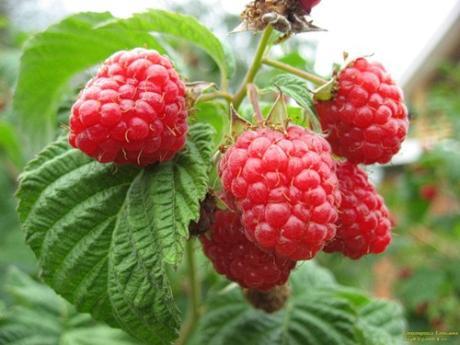
Planting material is harvested in the fall. The thickness of the root collar of seedlings should be at least 8-10 mm. The root system should reach 15 cm and have no obvious signs of disease.
Raspberries should be planted in late September or early October. It is important to plant before the soil freezes so that the roots take root and produce a good harvest. Some gardeners do this in early spring, when the buds have not yet sprouted.
Raspberries are grown in two ways: strip and bush. In the first case, they dig a trench, and in the second, they plant them in holes.
The distance between rows should be approximately 125 cm, and between plants about 50 cm.
Like the soil, seedlings also require preparation for planting. Excess shoots must be cut off and only one left. Its height should not exceed 20 cm.
Before lowering the plant into the hole, its roots must be moistened in a mullein nutrient solution or in soil mash. This is done to prevent the roots of the planting material from drying out. If the roots dry out a little during storage, then before planting you need to put them in water for 10 hours.
Many gardeners make a mistake when planting bushes. You cannot place seedlings at the bottom of the trench and then cover them with soil. As a result, the seedlings and bush will not take root.
Proper planting of seedlings should be carried out according to the following scheme: add humus, potash fertilizers, superphosphate to the dug hole and mix with soil.
It is important that the roots do not touch mineral fertilizers. Next, the seedlings are placed in a hole according to the growth of the bush. After this, the hole is covered with earth and compacted well. Then the planted bushes are watered. One bush will need a bucket of water. After the water is absorbed, under the raspberry bushes you can add pine leaves, humus, peat, fallen leaves, etc.
When planting autumn raspberry varieties, it is necessary to carry out hilling. To do this, cover the lower part of the stem 10 cm with soil. Then the roots will not stick out from the ground and the buds at the bottom will remain intact. If you plant according to the recommendations, raspberries will begin to bear fruit within a year.
Rules for caring for raspberries

In order for raspberries to develop well and bring a rich harvest, they need a sufficient amount of nutrients and moisture. Every year it is recommended to replenish the soil with fertilizers and, if necessary, use a drip irrigation system.
In the spring, the soil in the raspberry field should be loosened. In summer, the soil requires repeated loosening and weeding. The soil is processed depending on the number of weeds that appear and the appearance of a hard crust.
The site must be monitored not only in the summer season, but also in the winter. Before the onset of winter, the soil between the rows should be dug up to a depth of 15 cm, and the row itself to a depth of 10 cm. After this, wood ash is added. It is advisable to do the digging with a pitchfork so as not to damage the main roots.
The soil is covered with humus up to 12 cm thick. For the winter some varieties of raspberries bend down, i.e. They tilt the bushes towards each other and tie them. You can cover the top with leaves or spruce branches. This is done so that severe frosts do not damage the shoots.
Raspberry bushes are quite tall, so they need support when growing. With the help of a trellis support, you can improve the lighting of raspberries and make soil cultivation and maintenance easier. The support is made as follows: place 2 stakes on both sides of the trench and pull the wire. You can use polyethylene twine and thick fishing line.
In hot weather, raspberries need to be watered generously to prevent the shoots from drying out.
Water the raspberry bush before flowering and ripening of the berries. Abundant watering, especially in hot weather, helps to increase yield and increase fruit size.
Raspberries are in dire need of nutrients, so be sure to fertilize them in the first year after planting. For this, a solution of mullein or bird droppings is usually used.
Then fertilizing is carried out 2 times a year - in July and August.
It is necessary to monitor the raspberry shoots and, if necessary, shorten them to a developed bud. If there are frozen, weak, thin shoots, then they are cut to 8-10 cm. After harvest those shoots that bear fruit must be cut off almost to the very base.
Pruning should be done in the spring. This procedure helps the side branches develop better and the fruits increase in size. Raspberries must be picked as they ripen, preventing them from overripening on the bushes.
In one area, raspberries live for about 15 years. After this time, it is transplanted to another place to avoid the appearance of diseases and the spread of pests.
If all favorable conditions are created for growing raspberries, then propagation of the subshrub occurs vegetatively. There will be a good raspberry harvest only if you take care of it regularly.
Video about proper care of raspberries:
Interesting information about the vegetable garden




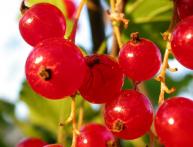

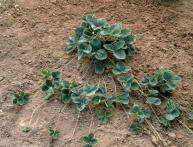
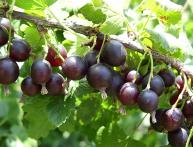

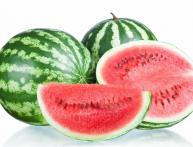
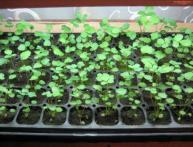
Comments
I have not encountered any difficulties with planting raspberries. It takes root well, moreover, it grows so much that in the spring we have to cut it back a lot. We also remove old shoots that have dried out.